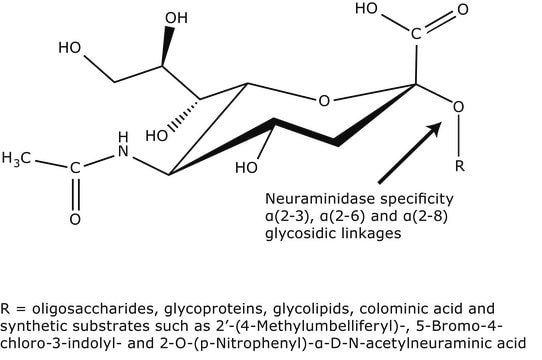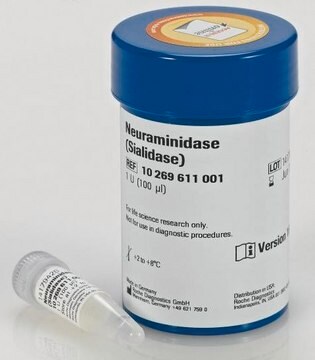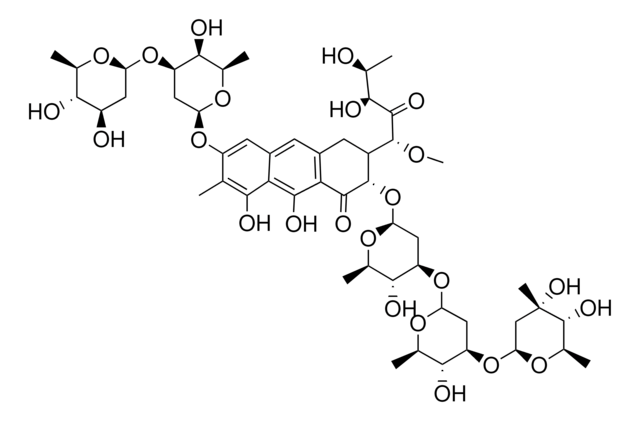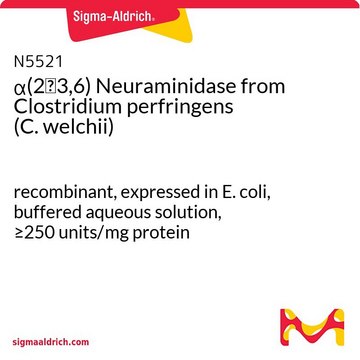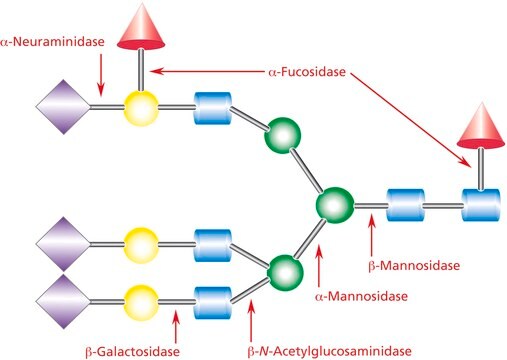N7885
Neuraminidase from Vibrio cholerae
Type III, buffered aqueous solution, 0.2 μm filtered, 1-5 units/mg protein (Lowry, using NAN-lactose)
Sinónimos:
Acyl-neuraminyl Hydrolase, Receptor-destroying enzyme, Sialidase
About This Item
Productos recomendados
Quality Level
type
Type III
form
buffered aqueous solution
specific activity
1-5 units/mg protein (Lowry, using NAN-lactose)
mol wt
83 kDa
application(s)
diagnostic assay manufacturing
foreign activity
Protease and NAN-aldolase, present
storage temp.
2-8°C
¿Está buscando productos similares? Visita Guía de comparación de productos
General description
Application
Biochem/physiol Actions
Quality
Unit Definition
Physical form
Preparation Note
signalword
Danger
hcodes
pcodes
Hazard Classifications
Resp. Sens. 1
Storage Class
10 - Combustible liquids
wgk_germany
WGK 1
flash_point_f
Not applicable
flash_point_c
Not applicable
ppe
Eyeshields, Gloves, type N95 (US)
Certificados de análisis (COA)
Busque Certificados de análisis (COA) introduciendo el número de lote del producto. Los números de lote se encuentran en la etiqueta del producto después de las palabras «Lot» o «Batch»
¿Ya tiene este producto?
Encuentre la documentación para los productos que ha comprado recientemente en la Biblioteca de documentos.
Los clientes también vieron
Protocolos
Nuestro equipo de científicos tiene experiencia en todas las áreas de investigación: Ciencias de la vida, Ciencia de los materiales, Síntesis química, Cromatografía, Analítica y muchas otras.
Póngase en contacto con el Servicio técnico